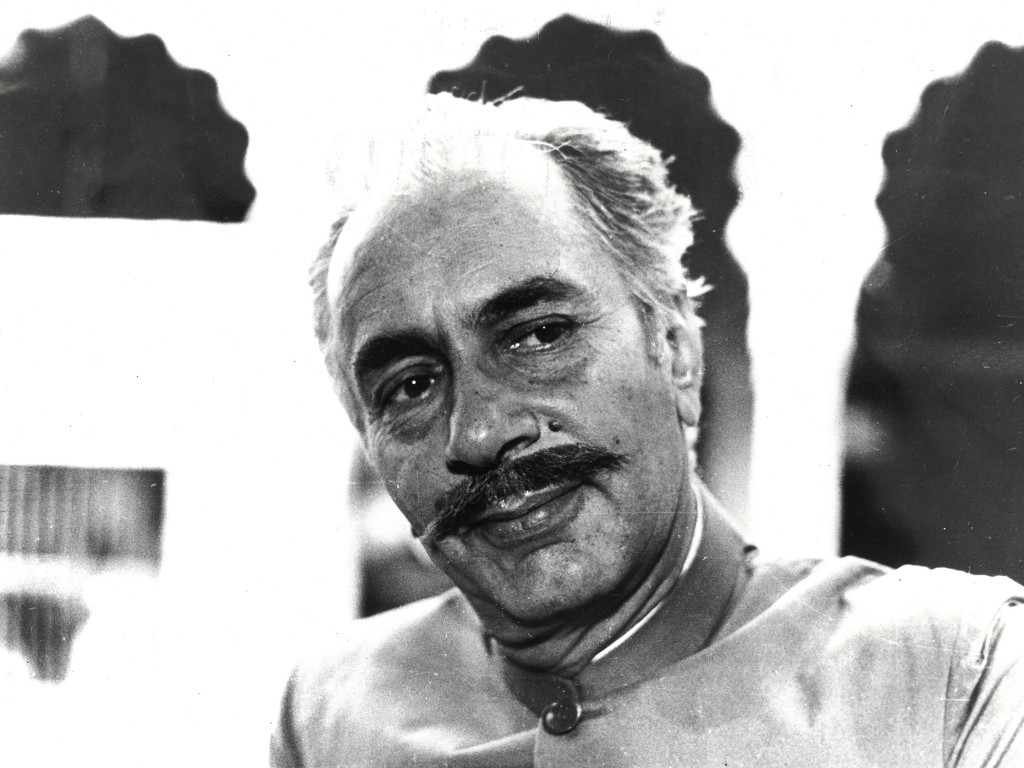Garm Hava remains even today one of the most poignant films ever to be made on India’s partition. Although Ritwik Ghatak and other film makers had made realistic films touching on the Bengal Partition, this was a rare Hindi film to tackle this sensitive subject in such a direct and realistic manner. Before Garm Hava, there were a mere handful of Hindi films that visited the partition. Raj Kapoor’s Aag (1948) mentions the Partition indirectly regarding Nargis’ background, while ML Anand’s Lahore (1949), Manmohan Desai’s Chhalia (1960) and Yash Chopra’s Dharmputra (1961) all had the partition as a strong backdrop of their stories.
Released in 1973, in many ways Garm Hava is a precursor to Ankur and other films of The Indian ‘New Wave’ that followed. For first time director MS Sathyu, it remains one of his best ever films and is a bold attempt to break out of the cliches of mainstream Hindi cinema of those days. Inspired by Satyajit Ray and Vittorio De Sica among others, Sathyu attempted to portray a slice of our history that had effected everyone but had been swept under the carpet in an attempt to hide the pain and trauma. Sathyu’s main motivation was to protray the affects the partition had on an ordinary family against the backdrop of the socio-economic changes that were an aftermath of the horrific division of the country. It brings home to the viewer not only the emotional trauma of losing one’s roots but also having come to terms with the complete social and economic devastation that follows. To quote Sathyu himself in an interview, “What I really wanted to expose in Garm Hava was the games these politicians play…How many of us in India really wanted the partition. Look at the suffering it caused.”
Based on an unpublished short story by famous Urdu writer, Ismat Chughtai, the story was further developed and scripted by the well-known poet-lyricist Kaifi Azmi. The original story centered around a station master who sadly watches the slow exodus of his family and friends to Pakistan. Putting his valuable experience as a union leader with shoe factory workers to use, Kaifi Azmi turned the protagonist from being merely an observer into someone whose livelihood and with it, his entire world crumbles, thus highlighting and personalizing the trauma of the partition.
Made with a shoestring budget, the entire film was shot on location in Agra. Except for Balraj Sahni, most of the other cast members had hardly any film acting experience and were mostly drawn from the Indian People’s Theatre Association, IPTA. It is Sathyu’s superb handling of the actors that ensures that each character, however minor, hold their own giving the film a lyrical realism never seen before. Dadi Amma, the old matriach of the family, who delivers an unforgettable performance as Salim’s mother, was discovered in the ‘mohalla’, where the story was filmed. Balraj Sahni, himself, agreed to do the film for a pittance and was so enthused with the film and his character, that at the conclusion of shooting, he organized a strike among the shoe factory workers of Agra demanding better wagesI When Sathyu was shooting at location in Agra and was being harassed by bystanders, he diverted them by employing a fake second unit using an unloaded camera!
Garm Hava is dominated by Balraj Sahni’s remarkable nuanced performance in his last major role, perhaps his greatest ever, Do Bigha Zamin (1953), notwithstanding. Fine support comes from rest of the cast, especially Farooq Sheikh and Gita Siddharth. Excellent camera work by Ishan Arya portraying the lyrical quality of the Agra monuments and the lovely Art Direction by Shama Zaidi with careful attention to the minutest of details add much authenticity to the film, something that was rare in Hindi films of those days. Although the film was shot in the haveli of a Hindu family, certain tiny details in the differences in lifestyle between a Hindu family and a Muslim family were deftly incorporated thereby adding to the authenticity of the film. Ustad Bahadur Khan’s evocative music helps lift the film a notch more.
The film was held up at the censors for eight long months due to its politically sensitive and volatile theme. However, after it was finally passed, it opened to rave reviews and was a commercial success at the box office. Contrary to apprehensions that the film would create communal tension, it was instead applauded for the empathetic and humane manner in which such a sensitive aspect of India’s history had been handled. What’s more, the film went on to win a National Award for its contribution to National Integration. To quote Sunil Sethi in the Junior Statesman dated October 27, 1973, “The film remains one of the most sensitive and evocative studies without the slightest contrivance of a minority group in India… It is the story simply of what a breaking up of a nation does; not only to human relationships but to individuals themselves, who begin to crumble under the obtuse pressures as things around them begin to fall apart.”
Garm Hava is just as relevant even today and is till date one of the finest Indian films that have re-visited the partition. It also remains MS Sathyu’s undisputed masterpiece.
Hindi, Urdu, Drama, Color


